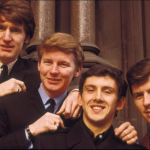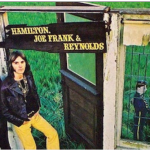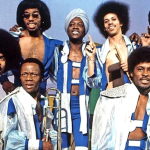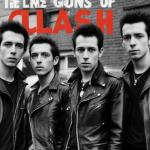“Runaway” – Jefferson Starship

“Runaway” by Jefferson Starship is a notable track from the band’s diverse catalog, reflecting their transition from psychedelic rock to a more polished rock sound in the late 1970s. Released in 1978 as part of their album Earth, the song showcases the band’s evolving musical style and ability to craft compelling rock anthems. This essay will explore the background of Jefferson Starship, analyze the musical and lyrical elements of “Runaway,” and discuss its cultural and historical significance.
Background of Jefferson Starship
Jefferson Starship emerged from the ashes of Jefferson Airplane, a band synonymous with the psychedelic rock scene of the 1960s. After Jefferson Airplane disbanded, several members, including Paul Kantner and Grace Slick, formed Jefferson Starship in the early 1970s. The new band retained some of the original members’ psychedelic influences but gradually incorporated a more mainstream rock sound. Earth, the album featuring “Runaway,” represents a period of commercial success for Jefferson Starship, blending rock with pop sensibilities.

Song Analysis
“Runaway” is a dynamic rock song characterized by its powerful vocals, catchy melodies, and polished production. The track opens with a driving rhythm section, featuring a steady drumbeat and a prominent bassline that set a lively pace. The guitar work is a mix of rhythmic strumming and melodic leads, adding layers of texture to the song.
Grace Slick’s vocals are a standout feature of “Runaway.” Her distinctive voice, with its rich tone and emotional delivery, brings the lyrics to life. The song’s verses build tension, leading to an anthemic chorus that is both memorable and impactful. The harmonies and backing vocals complement Slick’s lead, creating a full and engaging sound.
Lyrically, “Runaway” tells a story of yearning and escape. The protagonist expresses a desire to break free from constraints and pursue a sense of freedom and adventure. The lyrics convey a sense of urgency and determination, reflecting the universal theme of seeking liberation and new beginnings.

Cultural and Historical Context
Released in 1978, “Runaway” came at a time when rock music was diversifying, with bands exploring different styles and sounds. Jefferson Starship’s shift towards a more polished rock sound with pop elements was indicative of the era’s musical trends. The late 1970s saw a blend of rock, pop, and emerging new wave influences, with bands striving for commercial appeal while retaining their artistic integrity.
The themes of escape and liberation in “Runaway” resonated with the cultural mood of the time. The 1970s were marked by significant social and political changes, and music often served as an outlet for expressing desires for freedom and self-discovery. The song’s message of breaking free and pursuing one’s dreams appealed to listeners seeking inspiration and empowerment.

Reception and Impact
“Runaway” was well-received by fans and contributed to the success of the Earth album, which achieved platinum status. The song’s popularity helped to cement Jefferson Starship’s position in the rock landscape of the late 1970s. It received considerable airplay on rock radio stations and became a favorite in the band’s live performances.
The song’s impact is evident in its lasting appeal. “Runaway” continues to be celebrated by fans of classic rock and is featured on various compilations and playlists. Its timeless theme and memorable melody ensure that it remains a relevant and beloved track in Jefferson Starship’s discography.

Conclusion
In conclusion, “Runaway” by Jefferson Starship is a compelling rock anthem that captures the band’s evolution and the musical trends of the late 1970s. The song’s dynamic instrumentation, powerful vocals, and relatable lyrics have made it an enduring favorite among fans of classic rock. Jefferson Starship’s ability to blend rock with pop sensibilities is exemplified in this track, highlighting their contribution to the music world. “Runaway” remains a testament to the band’s talent and their ability to create music that resonates with listeners across generations.
Video:











